The modern U.S. Army Rangers trace their roots back to the activities of Benjamin Church. Church was a major in the Massachusetts militia, and he pioneered the use of hit-and-run tactics, inspired by those of Native American allies, during the periods of King Philip’s War (1675-1676), King William’s War (1688-1697), and Queen Anne’s War (1702-1713). Light, fast, and hard-hitting, Church’s companies were raised specially from handpicked men to take part in campaigns along the frontier. These were the 17th Century Rangers.
17TH Century Rangers – The Genesis of the Modern Army Rangers
During King William’s War, the Massachusetts Colony issued a set of militia orders to serve as a guide to equipping the men: “Every listed soldier…shall be always provided with a well fixt firelock musket, of musket or bastard bore, the barrel not less than three foot and a half long, or other good firearms to the satisfaction of the commissioned officers of the company, a snapsack, a coller with twelve bandeleers or cartouche-box, one pound of good powder, twenty bullets fit for his gun, and twelve flints, a good sword or cutlace, a worm and priming wire fit for his gun.”
Advertisement — Continue Reading Below
As I had always wanted to build a 17th-century impression, I felt that I would let this ordinance guide me in putting together the kit of one of Church’s men, ready to campaign on the 17th-century frontier.
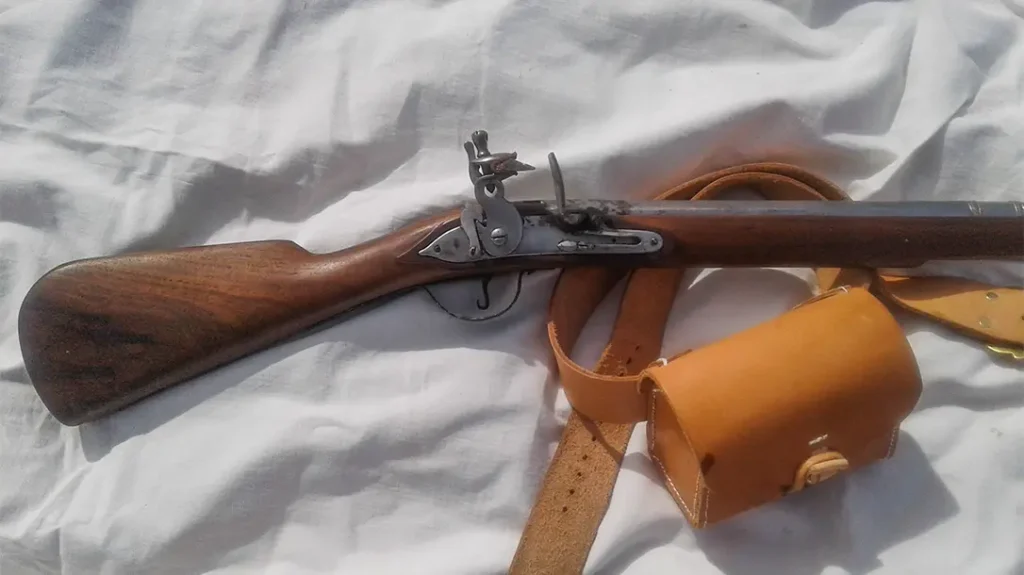
The Right Arm
First off, I needed an appropriate firearm. The ordinance called for a “well fixt firelock musket, of musket or bastard bore…” In 17th-century parlance, a musket was .75 caliber, and a bastard bore was a .69 caliber, so those were my choices. I began to look around at gun shows and on the internet, and as luck would have it, I found what I was looking for. It was a .69-caliber doglock musket, and it looked the part. With a long barrel and a rounded butt, it looked like it had come right out of the 17th century. I discovered that it was custom-made by Steve Woodman of Lebanon, Maine, and it was a model of a 1680 firearm.
Advertisement — Continue Reading Below
Here’s what he told me about it:
“This is a copy of an English doglock musket of the 1680s. These were used by both the British military and American militia men. In the 17th century, British military officers requested that the British gunsmith guilds build firearms for the army, and this is what they received. Then, in 1706, they purchased 10,000 Dutch military muskets, which were significantly superior. By about 1720, the British military began designing military guns and instructing gunmakers to copy them.
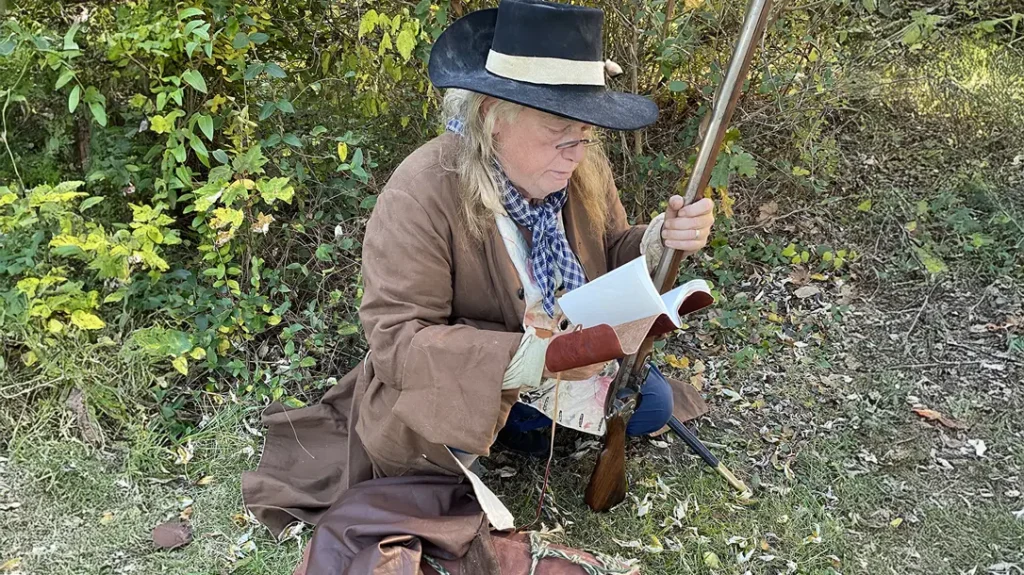
Advertisement — Continue Reading Below
New Style Gun
That’s when these old-style muskets finally went out of use. This style of gun was not just a military-style weapon but was also commonly used by anyone who wanted one. It was called a commercial utility musket and was so well-made that it was perfect for military use. Although made for 30 years or more, this one can be dated by the buttstock.
The rounded butt, without a buttplate, and the lack of grooves on the sides of the butt indicate that it represents a 1680s model.
By the 1690s, the butt had been flattened, and a buttplate was added. Grooves were also added to the sides of the buttstock. I copied this piece from pictures I have in some of my old gun books.” I was now the proud owner of a bastard-bore doglock musket.
Advertisement — Continue Reading Below
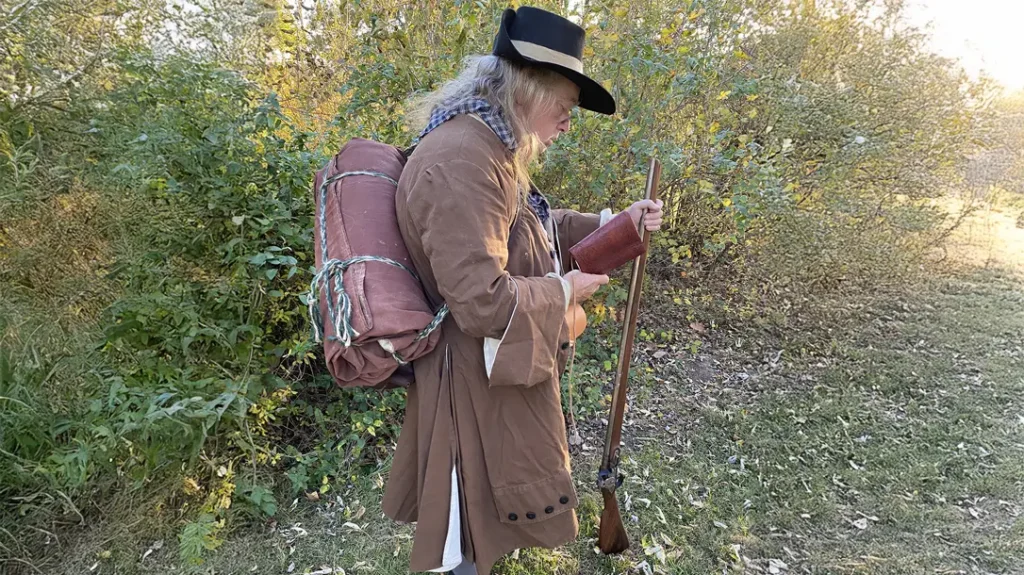
Packing Up
The next item on the list was a snapsack. I conducted online research and found that snapsacks had been issued to troops in the 1640s during the English Civil War and were in common use in the late 17th and early 18th centuries. The snapsack consists of a simple tube with a strap that is tied off on one or both ends with ties to seal in the contents. These tubes were made out of both leather and canvas-like materials and, when filled with the necessary equipment, were simply slung over the soldier’s back and carried into the field.
I decided to make mine out of leather, and since I already had some vegetable-tanned brown leather lying around from another project, that’s what I used. I cut a rectangle measuring 32 inches by 28 inches. Right sides together, I stitched along the 28-inch axis, making a tube bottom with a 14-inch span. I then stitched down the open side along the 32-inch length, completing the tube. At the top of the tube, I poked several holes to allow the drawstring to loop through.
Advertisement — Continue Reading Below
Snapsack
Next, I cut a leather strap about 36 inches long and 2.5 inches wide. I stitched the strap to the top and bottom of the tube, then cut a leather drawstring and threaded it through the holes I had punched through the top. This completed the snapsack and put me quite close to completing my impression.
Accessories
Next on the list was “a coller with twelve bandoleers or cartouche-box,” and I opted for the cartridge or cartouche box. Mine is a copy of the cartridge box from the pirate ship Whydah, dated 1717, which is itself a copy of a cartridge box from a 1690 shipwreck in Quebec. The main difference between it and other newer-style boxes is that the bottom wooden liner is open, without holes for the cartridges. It is made of stiff leather in a buff or natural color to match the waist belt, which is also buff.
Other than powder, flints and balls, priming wire and worm, the last item on the list was “a good sword or cutlace.” I had an old sword blade that was approximately 22 inches long, so I removed the handle and drilled out a new one from a piece of wooden stock. Then, I built a handguard from a piece of mild steel strap and finished it off with a square nut, much like a village blacksmith might have done back in the day.
Advertisement — Continue Reading Below
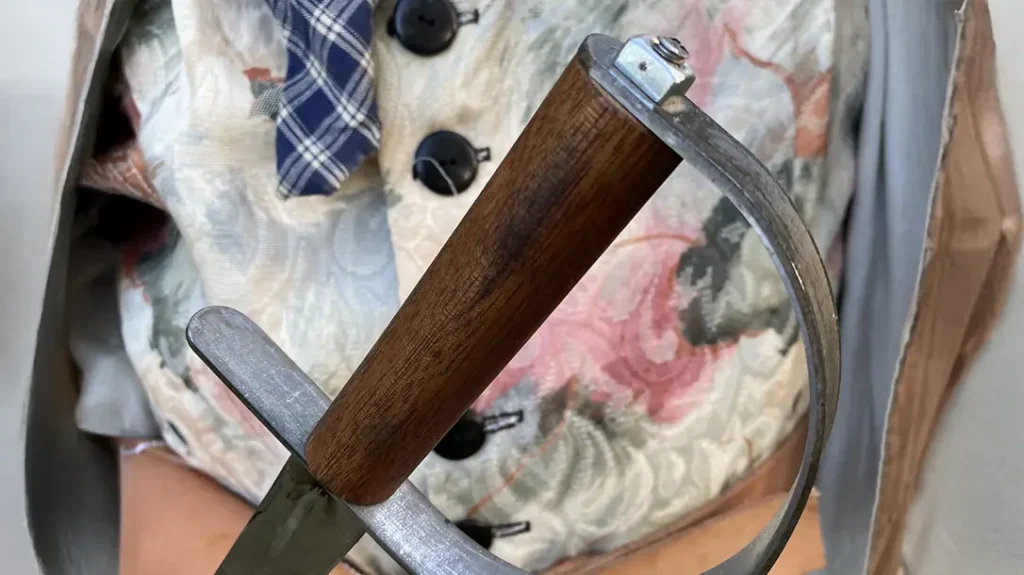
Short Blades
The men of Church’s company were armed with short blades, as they were traveling in open boats that they were in and out of, not to mention that they were in the woods where a long blade, like a rapier, would have simply gotten in the way. This sword is a simple setup, much like that of an average militia member.
While the ordinance doesn’t mention it, I also carry a couple of knives. The first is a common folding knife that I carry in my pocket. The next is a belt knife—a roach-belly design, patterned after the 17th-century trade knives that were everywhere on the frontier. Knives like this are simple and functional, and it is of the type that would have been available to my persona on the frontier. One can never underestimate the utility of a good knife, and mine is a great one that has served me well on many an outing.
Company-Worthy Attire
Next, I began to research the clothing of the time period. Not many vendors supply ready-made clothing for this era; however, there are patterns. I found a coat-and-vest pattern from Reconstructing History and contracted with my sister, who is a better tailor than I am, to make them for me.
What’s unique about the coat and vest is that the fashion was to have pockets very low on the hem line, only about 5 or 6 inches above the bottom edge of the coat. Next were the buttons—there were scads of them. They went all the way down the front of the coat to the hem, as was the fashion of the period. Additionally, the sleeve length is shorter than it was in the 18th century. It was customary for the last 6 inches or so of the shirt sleeve to show beyond the big, dog-eared cuffs.
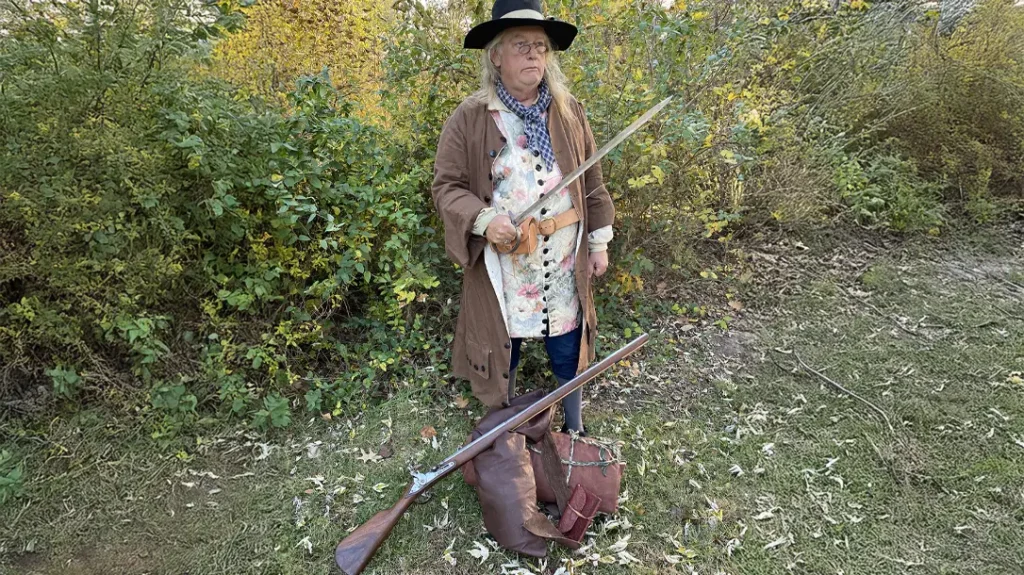
Center-Fly Breeches
I also purchased a pair of center-fly knee breeches. The center fly or “French fly” was popular, as the long vest covered the front of the breeches and hid the fly opening. I already had period shirts and stockings, and for a neck covering, I used nearly a square yard of blue-checked linen.
Next came shoes. The shoes and shoe buckles of the period are different from those of the 18th century. The shoes had very narrow latchets, and the shoe buckles were very small. I opted for a pair of straight-lasted shoes, which have no right or left, and I trimmed the latchets and added a leather tie.
Finally a Hat
To top it all off, I needed a hat. The stylish hat of the period was the tricorn, but this hat offered little protection from the elements in the field. The other style of hat that enjoyed widespread popularity was a big, floppy-brimmed hat. I got one in black and cocked up the back, leaving the front big and floppy.
This way, it provides shade and protection from the elements while still being in keeping with the fashion of the day. I also got a woolen Monmouth cap for cooler days when my ears needed a little extra warmth. The Monmouth cap is a knit stocking cap that has been shrunk or “fulled,” which thickens the yarn to the point that it will turn water.
Church’s men kept up this very European appearance in the field.
There appears to be no adaptation of Native American garments, such as leggings or moccasins. In fact, the Massachusetts Colony had very strict laws against the wearing of native garments.
17TH Century Rangers
So, there you have it: my impression of a 17th-century militia man, the ancestor of the Army Ranger. I admit that it’s something a little different from the more common 18th-century impressions that one sees at events, but it is interesting nonetheless. It was fun to research and put together this image of a frontier Ranger.
WHY OUR ARTICLES/REVIEWS DO NOT HAVE AFFILIATE LINKS
Affiliate links create a financial incentive for writers to promote certain products, which can lead to biased recommendations. This blurs the line between genuine advice and marketing, reducing trust in the content.


